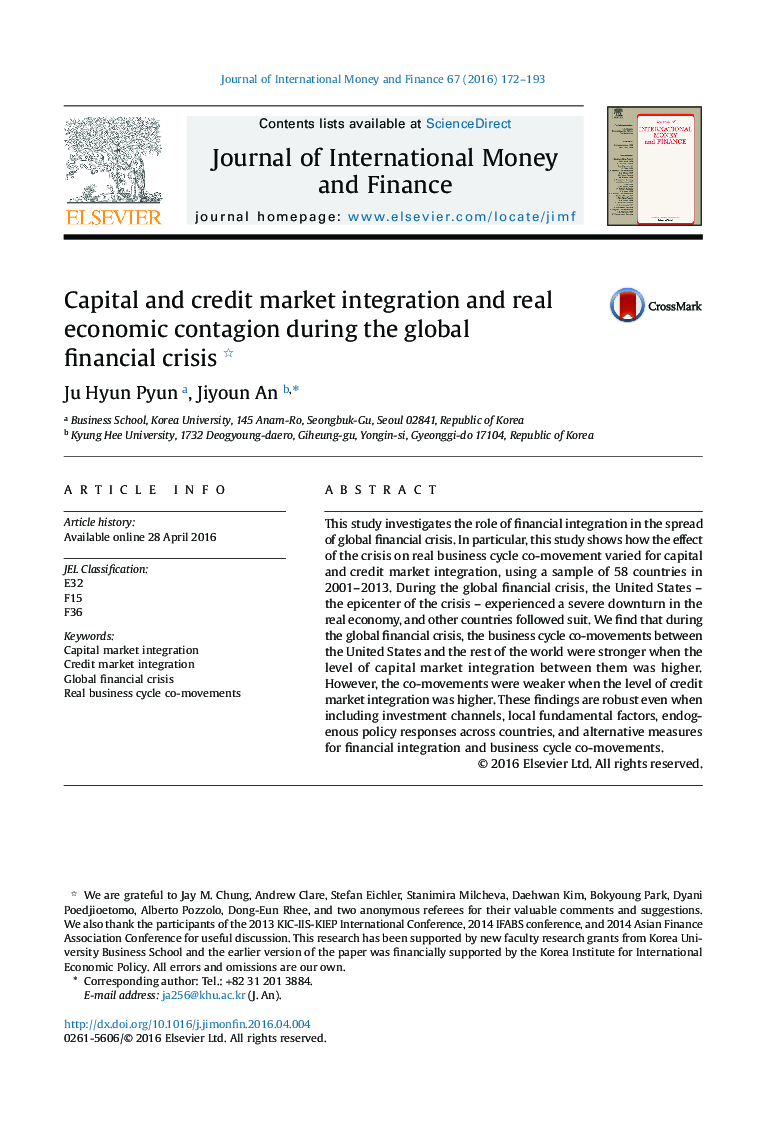| Article ID | Journal | Published Year | Pages | File Type |
|---|---|---|---|---|
| 964589 | Journal of International Money and Finance | 2016 | 22 Pages |
•We study the role of financial integration in the transmission of global financial crisis to real business cycle.•High capital market integration with the United States amplified the transmission of the crisis shock.•High credit market integration buffered against the spread of the global financial crisis to business cycle co-movement.
This study investigates the role of financial integration in the spread of global financial crisis. In particular, this study shows how the effect of the crisis on real business cycle co-movement varied for capital and credit market integration, using a sample of 58 countries in 2001–2013. During the global financial crisis, the United States – the epicenter of the crisis – experienced a severe downturn in the real economy, and other countries followed suit. We find that during the global financial crisis, the business cycle co-movements between the United States and the rest of the world were stronger when the level of capital market integration between them was higher. However, the co-movements were weaker when the level of credit market integration was higher. These findings are robust even when including investment channels, local fundamental factors, endogenous policy responses across countries, and alternative measures for financial integration and business cycle co-movements.
